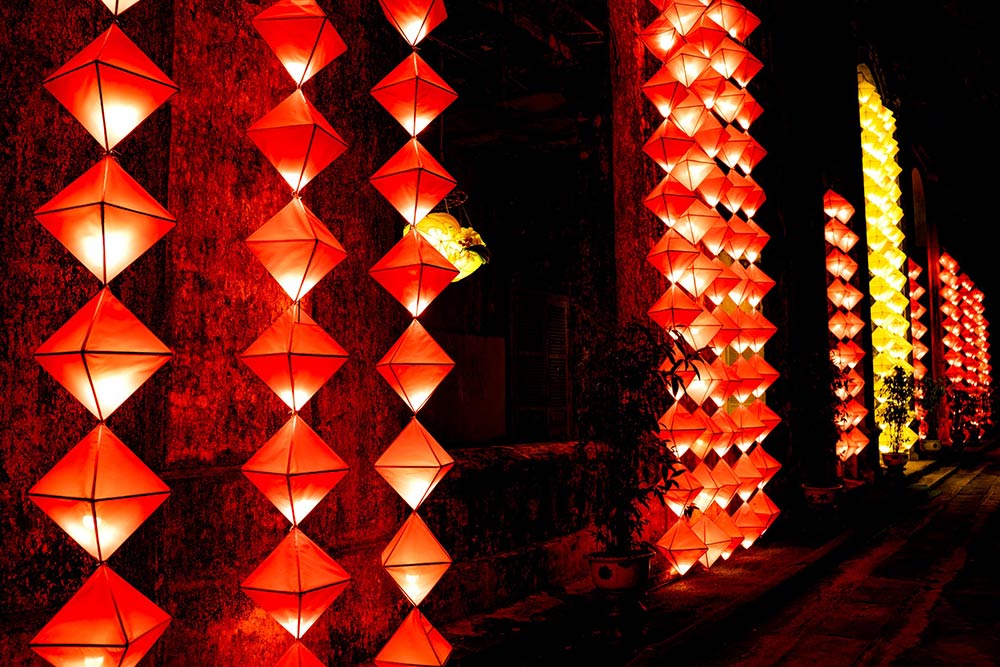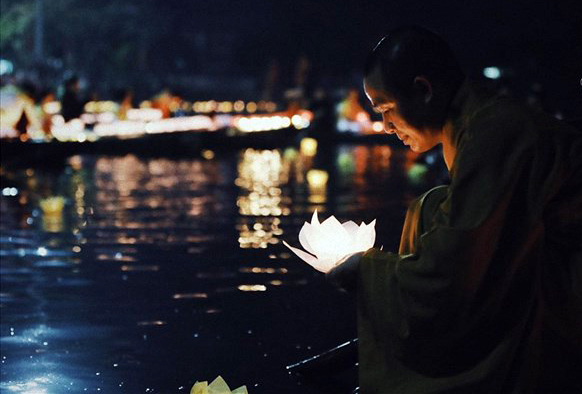The full moon in January is the first full moon night of the year. In "Tam Nguyen" - three big full moon days in January, July and October; The full moon in January is also known as Thuong Nguyen Tet, or Lunar New Year.
According to the document of the National Archives Center I, the custom of the full moon lamp in January of this vulgar origin in China. Le Quy Don once wrote in the book of Van Dai as follows: Han Vu De worship the most charisma (Emperor Emperor), worshiping from night to morning. Later on the day of the upper day (full moon in January), people displayed the lights. The custom of displaying light on the full moon of January is from there.
This holiday in the Tran dynasty was described by Le Tac in An Nam Chi Luoc (compiled in the first half of the 14th century) as follows: It is a shining lamp, lighting up to thousands of tops, glowing all over the sky. The monks go around reciting the Buddhist scriptures, the worshiping officials, called the lamp flanking. ”

During the Nguyen Dynasty, the Lunar New Year was considered one of the important ceremonies.
King Minh Mang (1791-1841) used to be standard: An upper, Trung Nguyen and Ha Nguyen periods made the table offering worshiping temples and Phung Tien Dien. The rituals of these periods such as Doan Duong (Duy with Tiet Thuong Nguyen, meeting the day of the Phung Tien Palace, the ceremony kept according to the rules, placed the same, not adding the table). Tiet Thuong Nguyen hangs the lights all night to highlight the New Year for beautiful weather.
The Nguyen Dynasty also said that the Thuong Nguyen day, in the temples with the glass of sticky rice, please open the door to the departments to bring the ceremony to the installation and save to the whole soup for the attendees to the servant, for neat.
Lunar New Year, King Minh Mang also set up a solemn vegetarian piano at Thien Mu Pagoda, 21 days and nights to worship the soul for the deceased religions.
Lunar New Year in the third year of Thieu Tri (1843), the king procession from the price to Minh Trung Chinh Cao Dien in Khon Thai palace, celebrating the upper life. After that, the king supported him from the car, went to play with Ho Ngoc Dich in the garden, watched the sky lamp, burned the cotton tree.
The sky lamp, called "Thua Van Phi Dang", started to make in the Minh Mang era, used thin paper to paste around the lamp, not to leave the gap, then take the small copper wire as a lantern, bring grass, paper soaked in a little Fat, adding camphor, dried, put into the lamp and burned. The fire rises, in the heart of the lamp produces the wind, naturally flying into the air. Branch light, radiant sky. It is praised that in the Forbidden City as well as the day.
However, in the reign of Thieu Tri, the court did not have the old rules but was happy according to the old custom. Because, King Thieu Tri had the view of "taking care of the main care, not taking the fun" when he discussed this holiday. The king did not agree with the arrangement of the lights too much.
Today, the custom of welcoming the full moon in January has had many changes according to modern life, far away from the ancient dictionary. However, all rituals performed on this day always mean the good new year, attaching importance to the beginning holidays as the folk saying: "The year -round ceremony is not equal to the full moon in January".












